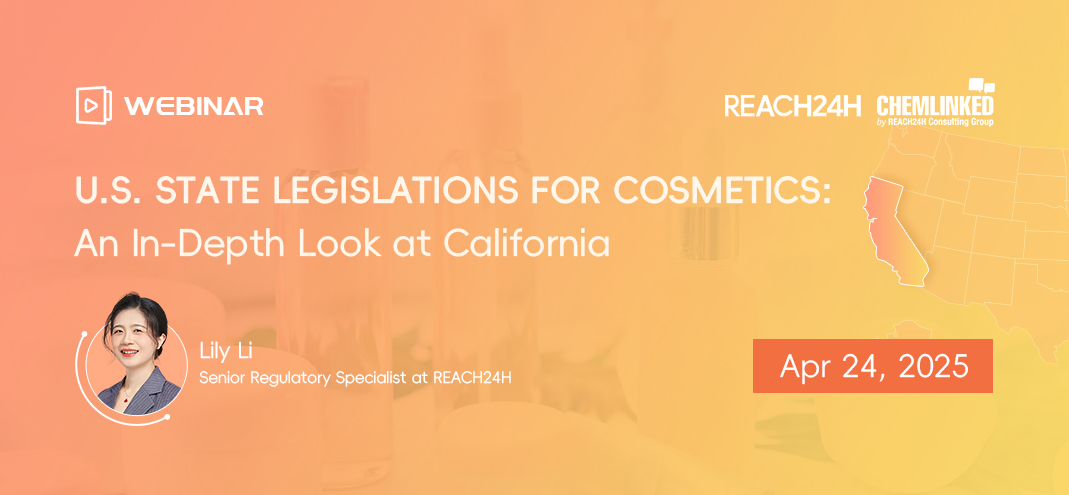How Disinfectants and Hand Sanitizers are Regulated in the US During COVID-19
The United States became the first nation worldwide since the pandemic began to surpass 10 million covid-19 infections.
To help enterprises faster access to the US market, the 12th Chemical Regulatory Annual Conference & Asian Helsinki Chemicals Forum is honored to have the attendance of Ms. Alexandra Dapolito Dunn from the US EPA and Dr. Shannon L. Gainey from REACH24H USA, who shared the latest regulatory updates on disinfectants under US EPA(FIFRA) and FDA.
In the United States, hand sanitizers don’t necessarily equivalent to disinfectant, the differences depend on the intended use of the product. Hand sanitizer is for use for human hands and disinfectant is for use for inanimate surfaces. Therefore, the compliance requirements of the two are worlds apart. Surface disinfectants are regulated by the U.S. Environmental Protection Agency (EPA) under the Federal Insecticide, Fungicide and Rodenticide Act (FIFRA), while hand Sanitizers are regulated as an Over-the-Counter (OTC) drug by the US Food and Drug Administration (FDA).
Ms. Alexandra Dapolito Dunn introduced that the US EPA has published the Emerging Viral Pathogen guidance this January, allowing a pathway to make off-label claims for Covid-19 if they have data showing their products are effective against harder to kill viruses. Through the expedited processes for reviewing new products and amendments to existing products, over 500 products have been included in List N and approved for use against Covid-19.
Products with “long-lasting” or “residual” efficacy” are particularly encouraged by EPA and these products enjoyed an expedited review process. To address supply chain issues with flexibilities, companies can switch suppliers of certain active and inert ingredients by notifying EPA instead of waiting for EPA approval.
Ms. Alexandra Dapolito Dunn reminded all flexible actions are temporary measures in response to the public health emergency. After the pandemic is considered resolved, EPA will review these flexible actions will be reviewed to determine whether to withhold as permanent measures. Enterprises need to seize this opportunity.
Dr. Shannon L. Gainey pointed out that although hand sanitizers do not require pre-approval from the FDA, they shall satisfy the requirements outlined in the Monograph: 1) ethanol, isopropanol and benzalkonium chloride are the only 3 approved active ingredients for hand sanitizers; 2) the inert ingredients should be included in the inert list;3) monograph dictates the labeling requirements;4) the production factory needs to obtain cGMP qualification. In March 2020, FDA issued temporary guidance which effectively permits companies to manufacture hand sanitizers with reduced regulatory requirements including:
- Facility registration
- Product listing
- Relaxed cGMP
Dr. Shannon L. Gainey reminded that FDA has the authority to enforce anything involved in the manufacture, sale, distribution of hand sanitizers including formulation, label, manufacture, impurities, testing and claims. FDA can not monitor every product, so it relies on enforcement discretion and prioritization. FDA cannot monitor every production facility, so it ranked impurity as the highest priority, followed by package and label.
Finally, Dr. Shannon L. Gainey also added manufacturers and CMOs (contract manufacturing organizations) must use the FDA’s Drug Registration and Listing System (DRLS) to register their facility and list their product and the DRLS registration needs to be renewed between Oct 1 and Dec 31 annually. On March 27, 2020, President Trump signed into law H.R. 748, the “Coronavirus Aid, Relief, and Economic Security Act” (CARES Act), which includes an important legislative initiative that reforms and modernizes the way OTC monograph drugs are regulated in the United States. FDA is provided with authority to collect user fees dedicated to OTC monograph activities and OTC Monograph reform facility fees will apply to companies who manufacture (including CMOs) in 2021. Therefore, even a company who manufactures(d) hand sanitizers under the Temporary Guidance in 2020 and plans to end manufacturing operations before 2021, it needs to update the DRLS from “Active” to “Complete”. With less than one month to update the DRLS registration, enterprises need to plan their future at the earliest opportunity.


